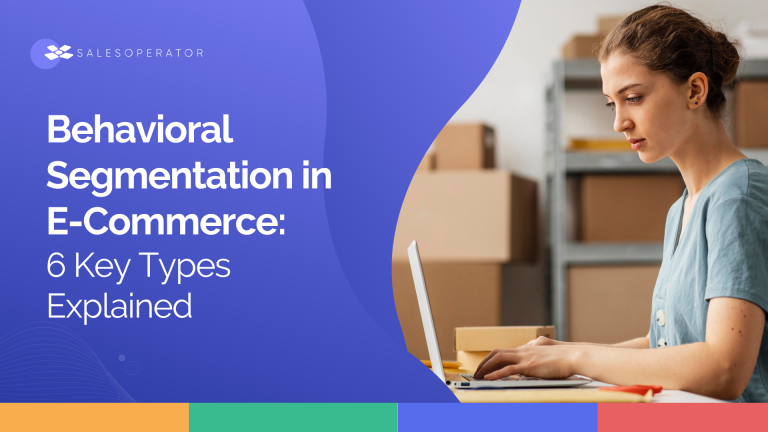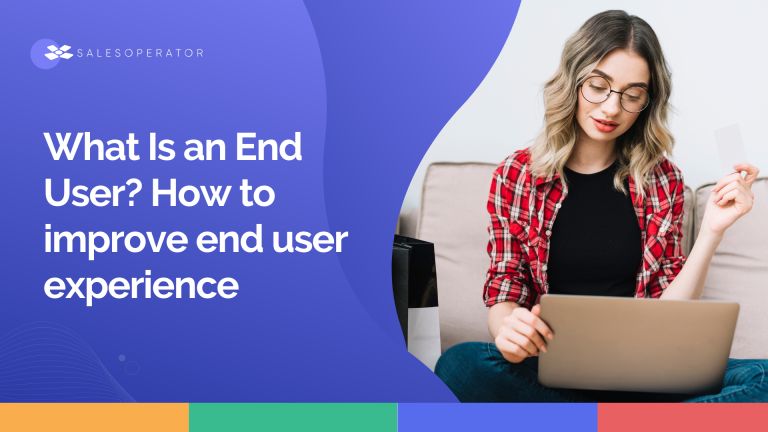Customer enablement is all about empowering your shoppers so they can get the most out of your products and feel great about their purchase. In simple terms, it means giving customers the tools, information and support they need – through every step of buying and using your products – so they become long-term, loyal customers. Instead of “sell and forget,” customer enablement treats each sale as the start of a relationship.
For example, if someone buys a gadget from your online store, enabling them might involve sending a setup video, FAQs, or quick-help tips that let them start using the gadget right away. This approach boosts customer confidence and satisfaction: when shoppers know exactly how to use what they bought, they’re more likely to keep coming back.
Imagine a small online store owner who sells kitchen gadgets. By including an easy-to-follow PDF user guide or “how-to” video after each sale, that owner is practicing customer enablement. Shoppers feel supported and confident – not confused. In other words, customer enablement ensures your customers don’t feel stranded the moment they click “Buy.” As one industry guide explains, enabling customers means “ensuring they get the most out of your products” and, as a result, they’re more likely to return, refer friends, and spend more with your business.
What Is Customer Enablement?
Customer enablement (sometimes called customer success enablement) is the strategy of equipping customers with the right tools, knowledge and guidance so they can successfully use what they bought. Its goal is to give buyers a better product experience – so they immediately see value and keep buying again. For online retailers, this might include things like onboarding emails with usage tips, tutorial videos, clear setup instructions, or fast-response support. In short, if sales focus on closing deals, customer enablement focuses on the post-sale journey: educating and assisting customers so they become happy, repeat buyers.
Think of it this way: after a customer purchases, customer enablement picks up the baton. It provides everything from onboarding resources (helping them start using the product) to self-service tools (like FAQs or chatbots) and ongoing tips. By doing this proactively, businesses build trust and loyalty. As one expert puts it, enabling customers “empowers customers to use your product successfully, leading to greater loyalty, satisfaction, and advocacy”. In eCommerce, that means a happier customer who is more likely to leave a good review or come back for a second purchase.
Benefits of Customer Enablement
Implementing customer enablement can transform an online retail business. It delivers benefits like:
- Higher customer satisfaction and loyalty. When customers easily learn to use your products, they enjoy them more and stick around. In fact, 81% of buyers say a good experience makes them more likely to buy again. By ensuring people feel confident with your products, you keep them coming back and referring friends. This directly boosts customer lifetime value.
- Valuable customer feedback. Enabling customers means opening lines of two-way communication. When you proactively help customers, they tend to tell you about their needs and problems. For example, giving users access to support reps or inviting reviews lets you gather real-world product feedback. You can then use that feedback to improve products or fix issues – creating a virtuous loop of improvement.
- Fewer support hassles. A strong enablement program often preempts common questions. Well-placed FAQs, tutorials or chatbots can answer questions before customers even ask. In practice, this means your support team spends less time on routine queries and more time on complex issues. Shoppers can help themselves quickly (e.g. “how do I track my order?”) and get back to enjoying their purchase.
- Boosted revenue and upsells. Educated customers tend to buy more. When people discover a product’s full capabilities – maybe through a how-to video or a tip email – they often use it in new ways and may purchase add-ons or upgrades. As one scenario illustrates, a software user who learns advanced features quickly through tutorials is “much more likely to purchase an annual subscription”. Similarly in retail, savvy shoppers who fully appreciate a product often return to buy complementary items.
By focusing on the customer experience after the sale, small businesses can turn one-time buyers into loyal customers. For a modern eCommerce store, customer enablement can mean the difference between a lonely buyer and a brand advocate.

Tips for Implementing Customer Enablement
Here are some actionable steps small online retailers can take right away:
- Create clear product guides and a knowledge base. After purchase, send customers useful how-to content. This could be a simple PDF guide, a help center page, or short instructional videos. For example, build a searchable FAQ section or help articles on your site so customers find answers themselves. The goal is to cover everything a customer might ask, from “How do I set this up?” to “Troubleshooting tips.” (Tip: check analytics or support history to spot common questions and write guides for them.)
- Use onboarding emails or tutorials. Welcome new customers with a friendly email series or video tutorials. Explain key features and usage tips. As Mailchimp suggests, consider pre-recorded onboarding videos or live demos that show customers how to get started. Even a simple “getting started” email after purchase can guide customers through any initial setup.
- Offer fast, friendly support. Make it easy for shoppers to ask questions. This might mean having a clear “Contact Us” section, adding live chat (or even a chatbot for quick replies), or being responsive on social media and email. The point is to provide help on multiple channels at any time of day. When customers know they can reach out and get answers fast, it builds trust.
- Build a community or referral network. Encourage customers to connect with each other and your brand. This could be as simple as a Facebook group, a user forum, or a loyalty/referral program. Communities let customers help each other (reducing your support load) and turn happy buyers into brand advocates. For example, some brands even run Reddit forums or fan pages where users swap tips. If customers can crowdsource answers or share experiences, it strengthens engagement and loyalty.
- Listen and adapt using feedback. After interacting with customers, ask for feedback. Send quick surveys or encourage reviews. Use those insights to improve products and processes. When customers see you acting on their suggestions (say, launching a new accessory they requested), they feel valued. As one source notes, strong enablement “creates a virtuous cycle of product improvement” from user feedback.
- Leverage technology and automation. Use simple tools to support enablement. For instance, automated email sequences can deliver tips based on what a customer bought. A small CRM or helpdesk (even a spreadsheet tracking questions) can remind you to follow up after purchase. Even something like setting up automated order tracking notifications helps customers feel in control.
In short, make it easy for customers to learn and reach you. Small steps like adding a “how-to video” link in your order confirmation or integrating an FAQ widget on your site can dramatically improve their experience. Customer enablement isn’t an all-or-nothing program; each helpful touchpoint counts.
Customer Enablement in Action: Examples
Real-world retailers illustrate how enablement drives loyalty:
- Amazon – Customer Reviews and Fast Shipping: Amazon is famous for empowering buyers. Its Verified Purchase reviews, helpful votes and detailed review summaries give customers trustworthy information before (and after) buying. This transparency builds confidence and loyalty. Amazon also uses those reviews to improve products (like launching Amazon Basics) and personalize recommendations. On the shipping side, Amazon’s commitment to fast, reliable delivery is another form of enablement – customers know they can expect quick, hassle-free service. These efforts helped Amazon become a titan of eCommerce.
- Zappos – Legendary Service: Online shoe retailer Zappos shows how customer-centric policies enable loyalty. Zappos famously offers free returns and even rushes orders overnight if needed. They’ll even help a customer find a sold-out shoe elsewhere. Because they remove friction and “wow” their buyers, roughly 75% of Zappos’ sales come from repeat customers. In other words, Zappos treats every purchase as the start of a relationship, ensuring customers feel supported no matter what.
- Coravin – Detailed Product Support: Even smaller brands use enablement. For example, wine accessory maker Coravin provides an extensive online support page for each product. Customers can find quick-start guides, troubleshooting tips, and FAQs right on the product page. This level of detail means buyers can use their new wine-preserving devices confidently without needing to call support. It’s a smart enablement move – customers learn to get value immediately, increasing satisfaction and repeat purchases.
These examples show that across eCommerce, successful brands invest in their customers’ success. By offering clear information, responsive service, and helpful tools, they keep customers engaged and coming back.
How SalesOperator Helps with Customer Enablement
At SalesOperator, we build tools to streamline your selling so you can focus on your customers. Our all-in-one eCommerce platform supports customer enablement in a few key ways:
- Unified Order Management: SalesOperator’s Sales Manager lets you view and process all orders at once. No more juggling separate dashboards for Amazon, eBay, Shopify, etc. With every order in one place, you can quickly spot and fix issues (like missing customer details or shipping glitches) before they affect the customer. This means faster fulfillment and happier buyers.
- Fast, Affordable Shipping: We integrate with Amazon’s FBA (Fulfillment by Amazon) at no extra cost. That gives your small business access to Amazon’s world-class shipping network. In practice, this makes deliveries hassle-free and cost-effective – your customers get orders quickly and reliably, reinforcing their trust in your brand.
- Multi-Channel Listings: SalesOperator offers a one-view platform to list products on all supported channels. You can create common listing rules and push updates instantly across channels. For customers, this means accurate, up-to-date product info no matter where they shop (and fewer surprises about pricing or availability). Clear listings help buyers make informed decisions.
- Data & Reporting: We give you reports on sales and inventory across marketplaces. By understanding what sells and what doesn’t, you can keep popular items in stock and avoid disappointing customers. Better inventory planning means less chance of a customer finding “Out of Stock” at checkout, which is key for a smooth customer experience.
- Centralized Customer Inbox: With SalesOperator, all customer messages and order data come into one place. No more switching apps or missing an email. When a customer contacts you – say about order status or product help – you can respond fast. This personal, timely support builds loyalty.
In summary, SalesOperator’s tools free you from operational headaches so you can enable customers. By handling listing, shipping, and reporting for you, we help ensure your customers get exactly what they ordered, when they expect it. That reliability – combined with your own product guides and support – turns a first-time buyer into a repeat customer.
Taking Action
For small business owners in online retail, customer enablement isn’t just a buzzword – it’s a growth strategy. By investing in resources like guides, tutorials, and fast support, you turn buyers into fans. And the payoff is real: happier customers, more repeat sales, and a stronger brand reputation.
If you haven’t already, try adding one simple enablement step today – maybe a welcome email with usage tips or an FAQ link in your order confirmation. From there, keep iterating: listen to your customers, refine your content, and leverage tools (like SalesOperator) to stay on top of orders.
With the right approach, your customers will know you’re looking out for them. That confidence translates into loyalty and word-of-mouth growth for your store. Start empowering your customers now, and watch them become your best promoters.




